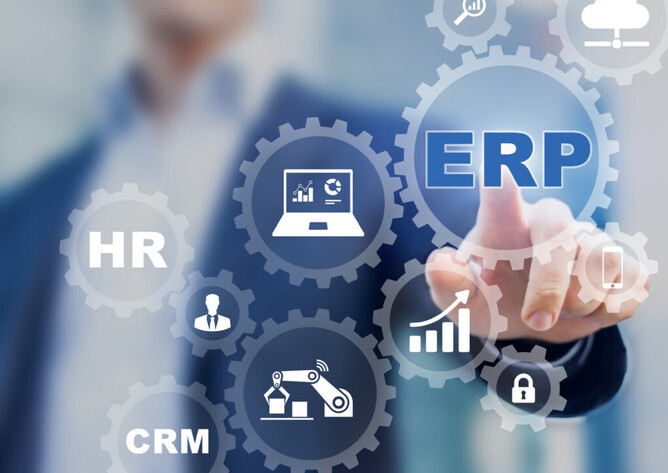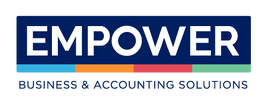This is the third article in our series on how to manage your business more effectively by applying our STAR Cycle concept, that’s all about business strategy. (If you missed the previous articles, discover how to implement a business strategy, and why you should spend time on business strategy development.)
How to find the right business tools to achieve your strategic goals
Once you’ve documented your business strategy, the next important step is to actually implement it. And in today’s business world, the ability of a company to deliver its strategy is very dependent on the business tools and systems it utilises to administer its processes.
If your business tools and systems are outdated – because they’re old, or not suited to the job – you may need to consider implementing a new system or two. We’ve come across many instances where outdated business systems have prevented business growth due to inefficient use of time and resources
What sorts of business tools are there?
There are a myriad of software solutions available for businesses. Some are general in nature, and some are industry specific.
Here’s an overview of some of the general types of business tools:
Accounting software: There’s no one-size-fits-all solution when it comes to accounting software – and you will need to consider how it integrates with your other business tools too, such as POS systems, payroll, inventory management, and so on.
Payroll software: Essential to streamline your admin and keep on the right side of employment law with regards to leave calculations.
Inventory management software: Being able to optimise your inventory, and forecasting with precision, can make a serious difference to your bottom line profitability. Read more about inventory planning.
Data management software: Helps your organise, store, and manipulate all kinds of data, including customer data, employee performance, financial records, and more. It allows online collaboration and also automation of many tasks.
Workflow management software: Visualise and streamline the workflow in your organisation, and set clear timeframes for projects, tasks, and processes. It helps with planning projects and allows you to create to-do lists, and assign tasks to various members of your team.
Process management software: If your business processes aren’t documented, you may face real challenges if an employee with business-critical know-how resigns, or is on leave. Documenting your business processes not only lessens that risk, but also provides an opportunity to revisit how you do things. It’ll make your business more agile, and also help with situations where staff have to cover for each other
Job management and scheduling software: Plan your resources and time with maximumefficiency – plus you’ll know exactly what’s happening when. Mobile solutions mean your staff have all the information they need at their fingertips, and can easily make updates on the go.
Business planning software: Instead of relying on static spreadsheets, bring your data to life and create different scenarios to help with decision making. Identify the priority areas in your business, identify risks, and get real-time data on your resources, capacity, and finances.
Business analysis software: Advanced analytics mean you can implement smarter and more accurate decisions – all based on real-time data. This can cover everything from sales, marketing, HR, finance, you supply chain, and more.
POS systems (point of sales software): Having POS systems that are fit for purpose and also future proof are more important now than ever. There are extra complexities if you retail in the physical environment as well as online. And a great POS system will interface with your accounting software and inventory management software to help with your financial decision making.
CRM (customer relationship management) software: A CRM system is absolutely essential for your sales team to keep track of contacts, opportunities, and sales statistics and reporting.
ERP (enterprise resource planning) software:ERP is the latest and greatest business tool, and for good reason: it can enhance productivity, streamline processes, integrate information, enhance customer service, automate stock control, and boost forecasting and reporting. The catch is that you have to know how to drive this complex system in order to get the most out of it – so if you’re lacking in-house resource, please reach out to us for help.
Financial dashboards: Wonderful for communicating important information to non-accountants to help with decision making. Read more about financial dashboards and how they could help you.
How to make sure your new business tools are fit for purpose
Whatever business software you choose, it must be fit for purpose.
The key to selecting the right software systems is to decide in detail what you need it to do. Write a list of must-have features – and do it before you start looking at potential solutions. This is important, as you need to have a benchmark you can use to compare systems – and you don’t want to get distracted by the bells and whistles of a new system. You need to keep focused on your particular requirements.
For that same reason, don’t be swayed by the recommendations of a friend or colleague on what’s worked in their business. Sure, they might have a great system – but it doesn’t necessarily mean it’s the perfect fit for your organisation. So keep focused on your list of must-have features.
Choosing a system must be carefully considered and not rushed; otherwise you may spend years regretting your purchase decision.
Do you need help selecting and implementing business software?
We can help you devise your list of must-have features, by working with your entire team to identify what business processes are currently working well – and to ascertain where improvements could be made.
Once that’s done, we can research potential solutions: we have some great business software partners we work with, and are always open to creating new connections.
We can also help with the nuts-and-bolts aspects of the implementation: migrating your data, setting up your system, and training your team on how to get the most out of it. Saving you valuable time and frustration, so you can focus on keeping your business running smoothly through the transition period.

